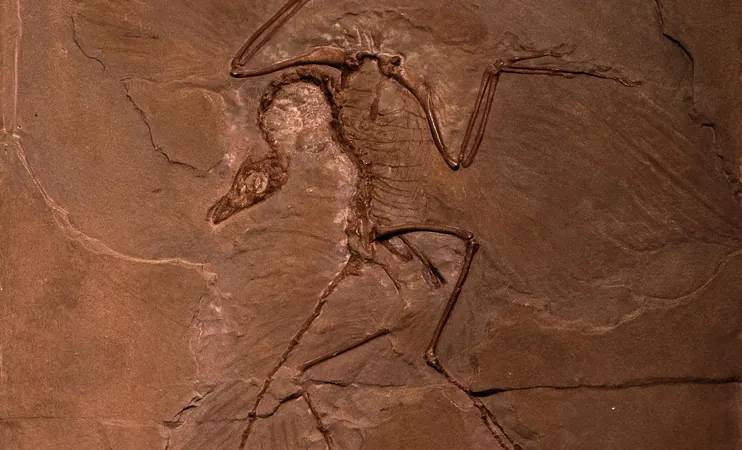
Mind-Blowing Discovery: Skull of Giant Extinct Bird Unearthed in Australian Desert!
2025-05-28
Author: Yan
Unraveling the Secrets of Genyornis newtoni
A groundbreaking find has left archaeologists and researchers in awe: the nearly complete skull of Genyornis newtoni, a colossal bird that once roamed Australia, has been uncovered in the fossil-rich Lake Callabonna region. This stunning revelation not only reshapes our understanding of this extraordinary species but also reclassifies its place on the avian family tree. Contrary to previous beliefs that equated it to modern day emus or ostriches, this 'thunder bird' is more closely related to waterfowl!
A Unique Anatomy Brought to Life
What makes this discovery even more remarkable is the striking anatomy of the skull, which presents a blend of evolutionary adaptations never seen before. "Genyornis newtoni had an upper jaw reminiscent of a parrot combined with a goose-like appearance, along with a powerful bite capable of crushing soft plants and fruits," explains Phoebe McInerney from Flinders University. This bird was not just another flying critter; it developed traits to help it thrive on a rich diet from wetlands. The upper beak, with its parrot-like hinge, allowed for a unique feeding method that is rare in modern birds, confirming that Genyornis played a significant ecological role.
Not What We Thought: The True Nature of Genyornis
Previous theories painted Genyornis as a flightless raptor or a primitive emu, but new evidence suggests otherwise. Its robust, muscular legs were designed for quick bursts of speed rather than endurance running, likely a strategy to escape Ice Age predators. "This new skull data reveals that Genyornis was more akin to a giant goose—an intriguing revelation in understanding the evolutionary quirks of Australia’s extinct megafauna," adds McInerney.
The Enigmatic Disappearance of Genyornis
Lake Callabonna, once a lush wetland, was a vibrant habitat for Genyornis newtoni. However, as the continent shifted north and the climate dried out, these ecosystems began to vanish. The presence of early humans, as indicated by stone-tool cut marks on Genyornis bones, added pressures that likely contributed to the extinction of this bird around 45,000 years ago. Dr. Trevor Worthy, a co-author of the study, expressed excitement over this landmark find: "Discovering the first fossil upper bill allowed us to visualize this remarkable bird—one that looks and behaves unlike any other, yet bears some resemblance to a goose." The tale of Genyornis’s extinction illustrates a familiar narrative of environmental decline intertwined with human influence.
A Fossil That Changes Everything
The unearthing of the Genyornis skull is not just an extraordinary scientific triumph; it also raises questions about prehistoric life in Australia. As researchers delve deeper into this remarkable find, they continue to rewrite the avian family tree, revealing the intricate and unique evolutionary paths of Australia's long-lost megafauna.





 Brasil (PT)
Brasil (PT)
 Canada (EN)
Canada (EN)
 Chile (ES)
Chile (ES)
 Česko (CS)
Česko (CS)
 대한민국 (KO)
대한민국 (KO)
 España (ES)
España (ES)
 France (FR)
France (FR)
 Hong Kong (EN)
Hong Kong (EN)
 Italia (IT)
Italia (IT)
 日本 (JA)
日本 (JA)
 Magyarország (HU)
Magyarország (HU)
 Norge (NO)
Norge (NO)
 Polska (PL)
Polska (PL)
 Schweiz (DE)
Schweiz (DE)
 Singapore (EN)
Singapore (EN)
 Sverige (SV)
Sverige (SV)
 Suomi (FI)
Suomi (FI)
 Türkiye (TR)
Türkiye (TR)
 الإمارات العربية المتحدة (AR)
الإمارات العربية المتحدة (AR)